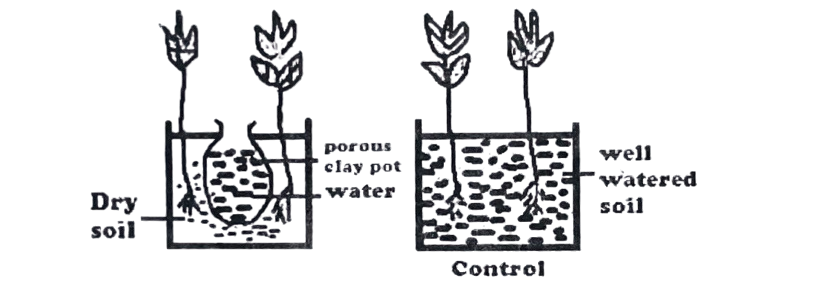Introduction:
Irritability is a fundamental characteristic of living organisms, enabling them to detect and respond to changes in their environment. This ability is crucial for survival, as it allows organisms to adapt to varying conditions and stimuli. Understanding the mechanisms behind irritability and the different types of responses is essential for mastering WAEC Biology.
Key Concepts:
1. Definition of Irritability:
Irritability refers to the ability of an organism to perceive and respond to stimuli in its environment. These stimuli can include changes in light, temperature, moisture, and the presence of chemicals.
2. Types of Responses:
- Tactic (Taxis) Movement: Directional movement of a whole organism or its parts towards or away from a stimulus. Examples include:
- Phototaxis: Movement towards or away from light.
- Chemotaxis: Movement towards or away from chemicals.
- Hydrotaxis: Movement towards or away from water.
- Nastic Movement: Non-directional response of a part of an organism to a stimulus. Examples include:
- Thigmonasty: Response to touch, as seen in the folding of Mimosa pudica leaves.
- Nyctinasty: Movement in response to light and dark cycles.
- Tropic Movement: Growth movement of a plant part towards or away from a stimulus. Examples include:
- Phototropism: Growth towards light.
- Geotropism: Growth in response to gravity.
- Hydrotropism: Growth towards water.
3. Experimental Demonstrations:
- Phototropism: To demonstrate phototropism, place a plant in a box with a hole on one side. Shine light through the hole and observe the direction in which the plant grows. The plant will exhibit positive phototropism by growing towards the light source.
- Geotropism: To demonstrate geotropism, place a plant horizontally and observe the direction of root and shoot growth. Roots will grow downward (positive geotropism), while shoots will grow upward (negative geotropism).
Study Tips:
- Understand Key Terms: Familiarize yourself with terms like irritability, stimulus, response, and the different types of movements (tactic, nastic, and tropic).
- Use Diagrams: Draw and label diagrams to visualize the different types of movements and responses.
- Practice Past Questions: Regularly solve WAEC-style questions to test your understanding and improve your exam readiness.
- Relate to Real-Life Examples: Connect theoretical concepts to real-life examples to enhance comprehension.
Conclusion:
Mastering the concept of irritability and response is crucial for success in WAEC Biology. The questions provided above cover essential aspects of the topic, and practicing them will enhance your understanding and performance.
Past WAEC questions on irritability and response are available below for you to study with.
OBJECTIVES
1. The curvature movement of plants in response to the stimulus of water is called
A. hydrotropism.
B. geotropism.
C. phototropism.
D. thigmotropism.
The diagrams below are illustrations of an experimental set-up to demonstrate a type of tropic response in
plants. Study them and answer questions 2 & 3

2. The type of response demonstrated is
A. phototropism.
B. geotropism.
C. hydrotropism.
D. thigmotropism.
3. The conclusion drawn from the experiment is that
A. shoots of plants, are negatively thigmotropic.
B. shoots of plants are negatively geotropic.
C. leaves of plants are positively phototropic.
D. roots of plants are positively hydrotropic.
4. Which of these instruments can be used to perform an experiment on geotropism?
A. Potometer.
B. Cup anemometer.
C. Klinostat.
D. Kymograph.
5. Growing radicles of seedlings are
A. negatively phototropic.
B. positively phototropic.
C. negatively geotropic.
D. negatively hydrotropic.
THEORY
1. (a) In a tabular form, distinguish between tropic movements and nastic movements. (b) Explain how light brings about tropic movement in the stem and root of a flowering plant
2. Describe an experiment to demonstrate the effect of gravity on the roots of plants
3. (a) State two differences between tactic and nastic movements in plants (b) Give two examples each of organisms that show (i) tactic movement (ii) nastic movement
4. What would be observed when a growing seedling is placed horizontally?
5. Describe an experiment to show that plant roots respond positively to gravity
6. (a) Define tropic and nastic movements, (b) Give two examples of tropism. (c) List four differences between tropic and nastic movements.
7. (a) List three organs of a higher plant that can respond to stimulus (b) What is tactic movement? (c) Explain the following terms, giving one example in each case: (i) Phototaxis (ii) Hydrotaxis (iii) Chemotax
8. (a) What is irritability (b) Complete the table by stating the type of response elicited by each of the given actions.
| Action | Type of response |
| Euglena moving towards source of light | |
| Opening and closing of mimosa plant leaves | |
| Mosquitoes avoiding repellants | |
| Earthworm moving away from light | |
| Sperm cell moving towards chemical substances of an ovum | |
| Four o’ Clock plant opening at 4:00pm | |
| Shoot of bean seedling growing towards sunlight |


